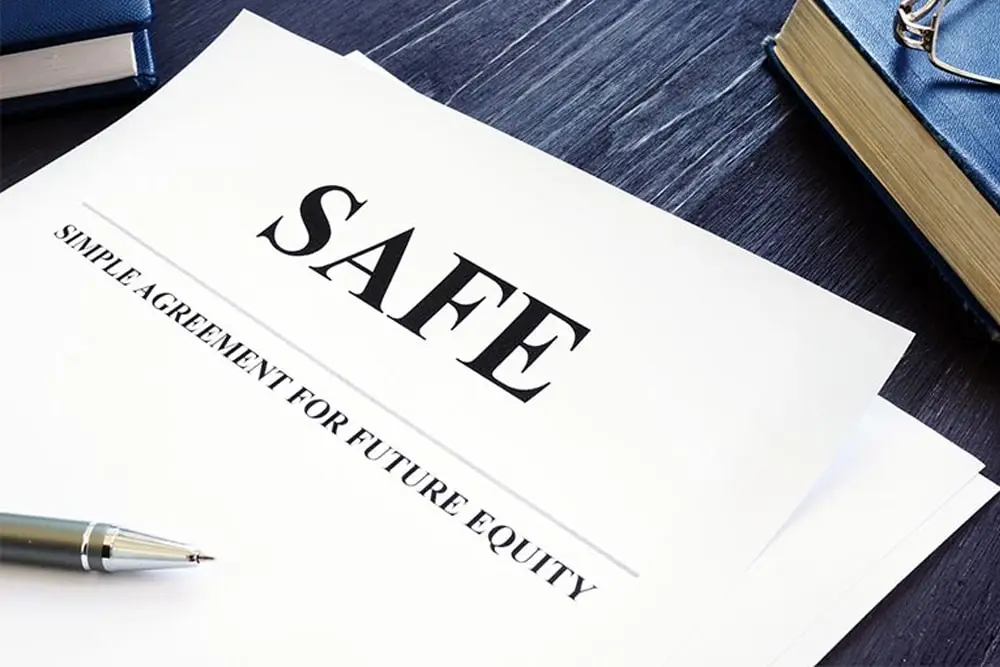
In recent years, “SAFE” notes have become one of the most common ways for early-stage startups to raise capital in the U.S. Still, most international founders have never heard of them. Lifelong entrepreneur and innovation consultant Michael Burtov explains the challenges these notes present to startups and angel investors.
Michael Burtov
This year, the Silicon Valley-invented investment instrument, “Simple Agreement for Future Equity”, or the “SAFE” note, passed its 10 year anniversary.
This investment instrument has become extremely prevalent: by some estimates, it now outnumbers traditional stock offerings by a ratio of 2 to 1 for early-stage startups.
SAFE notes are essentially loans that allow investors to lend money to a startup in exchange for the right to receive equity if the company raises VC funding. The big sales pitch: no valuation or lawyers needed.
The instrument, aggressively and ironically promoted as “founder friendly”, was invented by the prominent VC fund “Y-Combinator”. In fact, this structure has left many startups and angel investors out in the cold.
In fact, even the SEC issued a serious warning about their use.
Why should you be wary of selling SAFE notes as a startup and of buying them as an angel investor?
First, a history lesson:
- In 2012, the JOBS Act was passed by bipartisan effort in the U.S. Congress, legalizing equity crowdfunding, allowing non-accredited investors to invest in startups for the first time. This was seen as a blow to the VC industry, which had previously controlled startup investing.
- In 2013, Y Combinator introduced SAFE notes. By promoting a complex financial instrument that very few people outside the tech ecosystem understand, SAFEs were seen by many as an effort to lock out regular investors from startup investing and consolidate power back to VCs.
In many ways, SAFE notes can be seen as the VC industry’s attempt to circumvent the JOBS Act reforms intended to democratize startup investing. By making startup financing proprietary and convoluted, SAFE notes restrict the funding options for entrepreneurs while protecting the VC model.
10 years after launching, these are the common issues we have seen with SAFE notes:
Challenges for startups:
Conversion terms of SAFE notes are complex and often lead to the startup owning far less equity than intended. Details like valuation caps, pro rata rights, and discount rates can substantially impact ownership percentages.
Many entrepreneurs have also raised multiple rounds using SAFE notes, without realizing the dilution implications down the road.
When SAFE notes convert to equity, founders often end up owning far less of their own company than they expected. This also creates tension when it’s time for a priced equity round, as founders realize their ownership is less than expected.
Challenges for angel investors:
Venture capitalists understand SAFE notes well, while angel investors typically do not. This is because VCs created and popularized SAFE notes; and as repeat players who structure financing deals, VCs understand the mechanics of SAFE notes extremely well.
On the other hand, angel investors typically do not have as much experience with SAFE notes. These instruments do not exist outside of tech startup investing.
As one-off participants, angels are at an inherent disadvantage in understanding how SAFE notes work and the implications after conversion. This information asymmetry allows VCs to extract favorable terms and greater equity at the expense of other stakeholders.
How to navigate SAFE notes for immigrant founders
Immigrant founders navigating startup fundraising need to be especially cautious about taking SAFE note deals without fully understanding the implications. More than native founders, they are at an information disadvantage and vulnerable to predatory terms.
Some best practices for immigrant founders regarding SAFE notes:
- Only take the minimum SAFE notes needed to extend the runway.
- Despite the VC’s insistence that you don’t need to, you should consult with lawyers to review terms.
- Look beyond SAFE notes. Propose and pursue priced equity investment options.
- Connect with other founders who have experience with SAFE notes.
- Review the math on how various terms will impact ownership long-term.
- Don’t let FOMO push you into bad SAFE note deals. Prioritize value alignment over quick cash.
The key for immigrant founders is slowly building an understanding of U.S. investment norms and practices. SAFE notes are designed to benefit insiders. Avoid being rushed into deals before you are ready as an outsider.
With education, a deliberate strategy, and good guidance, you can use SAFE notes selectively rather than being used by them.



